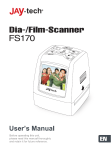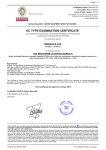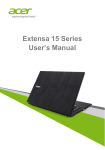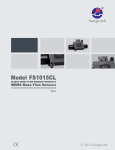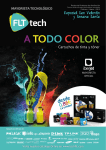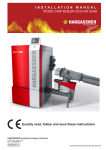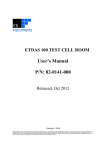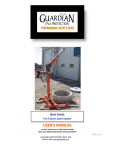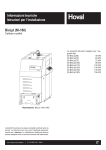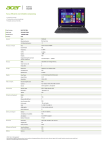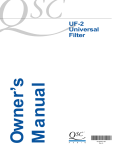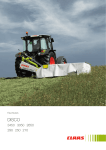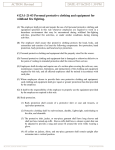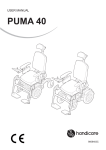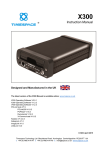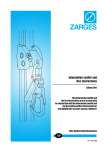Download SafeLink User Manual
Transcript
fallsafeusa.com | 704-262-7893 | [email protected] mobile SAFELINK HORIZONTAL LIFELINE SYSTEM USER MANUAL FallSafe USA | 322 Industrial Court, Concord, NC 28025 Mobile SafeLink Horizontal Lifeline System User Manual TABLE OF CONTENTS 1 SAFELINK SYSTEM INTRODUCTION............................................................3 2 SAFELINK SYSTEM DESCRIPTION................................................................3 3 SAFELINK SYSTEM OVERVIEW and CONNECTIONS....................................4 4 USER INSTRUCTIONS and LIMITATIONS........................................................5 5 PRIOR TO USE..................................................................................................6 6 ANCHORAGE REQUIREMENTS........................................................................6 7 CONNECTION REQUIREMENTS.......................................................................6 8 SYSTEM COMPONENTS................................................................................ 7-8 INSTALLATION—ANCHORAGE CONNECTORS...............................................9 9 10 INSTALLATION—ALUMINUM POSTS..............................................................9 11 INSTALLATION—STOPLINK BRAKE...............................................................10 12 INSTALLATION—MULTIPLE SPANS................................................................11 13 INSTALLATION—SINGLE-POINT ANCHORAGE..............................................11 14 HORIZONTAL LIFELINE—CLEARANCE REQUIREMENTS...............................12 15 CONNECTING TO THE SYSTEM.......................................................................13 16 MAINTENANCE, SERVICE and STORAGE.......................................................13 17 TRAINING.......................................................................................................13 18 FIELD INSPECTION.........................................................................................14 WARNING: This product is part of a complete personal fall arrest system. These instructions must be provided to the user of this equipment. Users must read and understand these instructions, or have the instructions explained to them, before using this equipment. Users must read and follow the manufacturer’s instructions for each component or part of the complete system. Manufacturer’s instructions must be followed for proper use and maintenance of this product. Alterations or misuse of this product or failure to follow these instructions may result in serious injury or death. IMPORTANT: If you have any questions on the use, care, or suitability of this equipment for your application, contact FALLSAFE USA. 2 Mobile SafeLink Horizontal Lifeline System User Manual 1 SAFELINK SYSTEM INTRODUCTION This User Manual describes the FallSafe USA Mobile SafeLink Horizontal Lifeline System, an engineered personal fall arrest system. When erected, used and maintained as described in this manual, the SafeLink System complies with all OSHA regulations pertaining to personal fall arrest systems and can save the at-risk worker’s life in the event of a fall from an elevated work position. The SafeLink System is the result of a decade of development. It addresses the difficulties and limitations of working at leading edges at the top surface of buildings under construction, and other applications where workers are required to work horizontally and a fall hazard exists. At such locations, there are few usable anchorage points and those that exist may have severely limited strength. THE INSTRUCTIONS FOR ERECTION, USE AND MAINTENANCE PRESENTED IN THIS MANUAL MUST BE FOLLOWED PRECISELY. MISUSE OR FAILURE TO FOLLOW WARNINGS AND INSTRUCTIONS MAY RESULT IN SERIOUS PERSONAL INJURY OR DEATH. unexpected, significant and potentially disastrous changes in the behavior of the SafeLink System. For example, using stronger or stiffer components than specified may cause the system to generate higher forces to the anchorage points, causing the anchorage points to be overloaded. Special field circumstances may require custom designs or components. However, any custom design must be analyzed and authorized by a “qualified person,” as identified by a safety engineer, before that custom SafeLink System may be erected. State-of-the-art fall protection technology and the FallSafe USA Mobile SafeLink Horizontal Lifeline System are still evolving. FallSafe USA is proud of its role as a leader in developing fall protection technology for leading edge work and is pleased to provide the most effective and practical system available for the safety of workers. As new equipment becomes available, as experience teaches new lessons, and as new approaches are conceived, FallSafe USA will periodically revise the SafeLink System and update this User Manual. Subsequent sections of this manual describe and specify the components that comprise a properly installed SafeLink System. What may, on the surface, appear to be minor modifications to the SafeLink System can lead to 2 SAFELINK SYSTEM DESCRIPTION The graphics above provide an overall view of the FallSafe USA Mobile SafeLink Horizontal Lifeline System being used during the deck forming operation. The typical SafeLink System uses an overhead horizontal lifeline connected to a StopLink Brake supported by aluminum posts, cross-arm straps and other approved anchorages covered in this manual. The user wears a fixed D-ring full-body harness, and is attached to the overhead horizontal lifeline with a self-retracting device (SRD). Self-locking connectors must be used for all attachments of the user to the horizontal lifeline. This User Manual specifies the components to be used and describes permissible variations to the SafeLink System. It should be noted that the horizontal lifeline is positioned overhead, which provides certain advantages, including: 1. The horizontal lifeline should not constitute an obstruction to the worker; 2. If an employee should fall, it is less likely that the fall would pull another co-worker off of the elevated work surface; 3. The total fall distance is minimized by providing an overhead horizontal lifeline. THE HORIZONTAL LIFELINE SHOULD NEVER BE POSITIONED BELOW THE ELEVATION OF THE FIXED D-RING ON THE BACK OF THE FULL-BODY HARNESS. 3 Mobile SafeLink Horizontal Lifeline System User Manual 3 SAFELINK SYSTEM OVERVIEW and CONNECTIONS A complete Mobile SafeLink fall protection system consists of the following components: Anchorage, Body Support, and Connecting Devices. A list of component options is detailed on pages 8-9 of this manual. There are a number of different configurations that can make up a complete SafeLink System. Typically, the SafeLink System will be setup as a dual-point anchorage system, and the lifeline assembly portion of the system will be made up of the same components for most ALUMINUM POST FS-EX5501-5 COME-A-LONG FS-EX2510 CABLE FS-EX2500-00 applications: The Come-A-Long, SafetyLink Strap, Cable, Fist-Grip Cable Clamps, Carabiners, StopLink Brake, and Shoulder Eye-Bolts, as shown in Fig. A below. The most common anchorage option is outlined in Fig. A below: A PVC sleeve is inserted into pre-poured concrete, into which aluminum posts are inserted, once the concrete has set. Figures B-G detail other anchorage configuration options. See pages 8-12 for detailed component descriptions and installation instructions. CARABINER FS1015 STOPLINK BRAKE FS-EX2503-SL ALUMINUM POST FS-EX5501-5 (Built-in Tension Indicator) SHOULDER EYE-BOLT FS-EX2508 SHOULDER EYE-BOLT FS-EX2508 SAFETYLINK STRAP FS-EX2505 PVC Sleeve (FS-EX2504) FIST-GRIP CABLE CLAMPS FS-EX2516 Fig. A. Typical Configuration for SafeLink Horizontal Lifeline System PVC Sleeve is inserted into pre-poured concrete, and aluminum posts are inserted into PVC sleeve. PVC Sleeve (FS-EX2504) Fig. B. Cross-Arm Straps (FS88811-HW-10) Cross-Arm Strap is designed to choke around reinforced concrete structures to create an anchorage point. Fig. E. The Whizzler (FS-EX2514) / Single-Point Anchorage An aluminum cap with D-ring that swivels 360º. Used for single-point anchorage applications only (See pp. 8,9,12). Fig. C. Rebar Link (FS-EX2507) Designed with 6061-T6511 aluminum. Clamps to twelve (12) # 9 or larger stirruped rebar. Fig. F. EZ-Link Double Connector (FS-EX2502-DBL) Attached directly to the column rebar cage—six (6) # 9 rebar or larger—without the need for decking alterations. Fig. D. Removable Concrete Anchor (FS-EX110) A reusable concrete anchor designed to be used with lifeline systems, usually with poured columns or walls. Fig. G. Form Link (FS-EX2502) 3 different applications: Clamped around rebar or a finished column, or mounted on a finished wall (See p. 8-9). 4 Mobile SafeLink Horizontal Lifeline System User Manual 4 USER INSTRUCTIONS AND LIMITATIONS SYSTEM OBJECTIVE USE LIMITATIONS The FallSafe USA Mobile SafeLink Horizontal Lifeline System is a pre-engineered temporary horizontal lifeline system, designed as part of a complete personal fall arrest system, to limit the total fall distance and arresting forces in the event of a fall. 1. The FallSafe USA Mobile SafeLink Horizontal Lifeline System is designed for up to four (4) users at one time, per system, with a capacity (including clothing, tools, etc..) up to 310 lbs (140.61 kg) per user. IMPORTANT—USER MUST READ AND UNDERSTAND THESE INSTRUCTIONS. Keep these User Instructions on site for reference. INSTRUCTIONS FOR USE 1. Failure to follow all instructions and limitations on the use of the Mobile SafeLink Horizontal Lifeline System may result in serious personal injury or death. 2. Before using a personal fall arrest system, employees shall be trained in accordance with the requirements of OSHA 1910.66 in the safe use of the system and its components. 3. Personal fall arrest systems, including the Mobile SafeLink Horizontal Lifeline System, shall be inspected prior to each use for wear, damage, and other deterioration and defective components, which must be immediately removed from service, in accordance with the requirements of OSHA 1910.66 and 1926.502. 4. The complete fall protection system must be planned before using (including all components, and the calculation of fall clearance and swing fall). 5. Users must have a rescue plan, and the means at hand to implement it, that provides for the prompt rescue of employees in the event of a fall, or assures that employees are able to rescue themselves. 6. Store the SafeLink System in a cool, dry, clean environment, out of direct sunlight, when not in use. 7. After a fall occurs on the system, or if more than 6 in (152.4 mm) of cable is pulled out of the StopLink Brake device, immediately remove from service for authorized repairs or disposal. 2. Due to the interactions of SafeLink with other system components, only approved FallSafe USA products may be used with the Mobile SafeLink Horizontal Lifeline System. 3. The Mobile SafeLink System is designed to be used in temperatures between -40ºF and +130ºF (-40°C to +54°C). 4. Only connecting subsystems that limit the fall arrest forces to less than 900 lbs (408.23 kg) may be used with the FallSafe USA Mobile SafeLink Horizontal Lifeline System. 5. Do not expose the FallSafe USA Mobile SafeLink Horizontal Lifeline System to chemicals or harsh solutions which may have a harmful effect. Contact FallSafe USA Technical Service with any questions. 6. Only FallSafe USA full-body harnesses with fixed back D-ring may be used with the Mobile SafeLink System. 7. In accordance with the requirements of OSHA 29 CFR 1910.66 and 1926.502, the FallSafe USA Mobile SafeLink System must be installed and used under the supervision of a “qualified person” as defined by OSHA 1926.32(m). 8. Caution must be taken when using the FallSafe USA Mobile SafeLink Horizontal Lifeline near moving machinery, electrical hazards, sharp edges, or abrasive surfaces. Contact with these elements may cause equipment failure, personal injury, or death. 9. Minors, pregnant women and anyone with a history of back or neck problems should not use this equipment. 10. Do not use or install equipment without proper training from a “competent person” as defined by OSHA 29 CFR 1926.32(f). 11. Only FallSafe USA, or persons or entities authorized in writing by FallSafe USA, shall make repairs or alterations to the equipment. 12. For custom applications of the FallSafe USA Mobile SafeLink Horizontal Lifeline System not addressed in these User Instructions, please contact FallSafe USA Technical Service. 5 Mobile SafeLink Horizontal Lifeline System User Manual 5 PRIOR TO USE Prior to using the Mobile SafeLink Horizontal Lifeline System, a rescue plan must be in place if the user cannot rescue themselves. Users of the Mobile SafeLink Horizontal Lifeline System must read and understand these User Instructions, as well as the User Instructions for every component and/or subsystem of the personal fall arrest system. The entire Mobile SafeLink Horizontal Lifeline System and its subsystems must be inspected prior to each use. • Check the StopLink Brake in the lifeline system to ensure that no more than 6 in (152.4 mm) of cable have been pulled from the unit. All snap hooks and carabiners must be able to self-close, lock and meet all ANSI standards. • Check the operation of self-retracting devices (SRD’s) by pulling smoothly on the device, then pull sharply on the device to engage the locking mechanism. • All webbing must be inspected for tears, cuts, fraying, abrasion, discoloration, or other signs of wear and damage. Sewn terminations should be secure, complete, and not visibly damaged. • Cable must be inspected for kinks, broken strands, corrosion, abrasion, or other signs of wear and damage. Terminal ends should be secure with the thimble tight and not visibly damaged. System must be properly tensioned. • If the Come-A-Long is used, the SafetyLink Adjustable Safety Strap must be used and taut. • Damaged and other deteriorated and/or defective components must be immediately removed from service, in accordance with the requirements of OSHA 29 CFR 1910.66 and 1926.502. 6 ANCHORAGE REQUIREMENTS All anchorages in which the FallSafe USA Mobile SafeLink Horizontal Lifeline System attaches must meet the requirements of OSHA 29 CFR 1910.66 and ANSI Z359.1-2007. In accordance with OSHA standards: The Mobile SafeLink Horizontal Lifeline System has been designed as part of a complete personal fall arrest system, which maintains a safety factor of at least two (2) feet, and must be installed and used as outlined by the qualified person (FallSafe USA) according to the Mobile SafeLink Horizontal Lifeline System User Manual. energy absorber. It is designed to limit the maximum arrest load to 1,000 lbs (453.59 kg) on the end anchorages. Therefore, the end anchorage must be rated at a minimum strength of 2,000 lbs (907.18 kg), twice the maximum arrest load. ANCHORAGE CONNECTORS Anchorage connectors are components that couple the personal fall arrest system to the anchorage. The end anchorage connectors are designed to resist and transfer at least two (2) times the maximum arrest load to the end anchorage. The Mobile SafeLink Horizontal Lifeline System incorporates the FallSafe USA StopLink Brake as an in-line 7 CONNECTION REQUIREMENTS All connecting subsystems must only be coupled to compatible connectors. OSHA 29 CFR 1926.502 prohibits snap hooks from being engaged to certain objects unless two (2) requirements are met: 1) it must be a locking type snap hook, and 2) it must be “designed for” making such a connection. “Designed for” means that the manufacturer of the snap hook specifically designed the snap hook to be used to connect to the equipment in question. The following connections must be avoided, as they can lead to roll-out when a locking snap hook is used: • Two (2) snap hooks connected to each other • A snap hook connected back on its integral lanyard • A snap hook connected to a web loop or web lanyard • Improper dimensions of the D-ring, rebar or other connection points in relation to the snap hook dimensions that would allow the snap hook keeper to be depressed by a turning motion of the snap hook • Directly connecting a snap hook to the horizontal lifeline • Two (2) (or more) snap hooks connected to one (1) D-ring 6 Mobile SafeLink Horizontal Lifeline System User Manual 8 SYSTEM COMPONENTS COMPATIBILITY LIMITATIONS All components and subsystems used with the Mobile SafeLink Horizontal Lifeline System have been tested as part of a pre-engineered flexible horizontal lifeline system. Only FallSafe USA approved components and subsystems are to be used with the Mobile SafeLink Horizontal Lifeline System. Body Support Body support is the component of a personal fall protection system that is worn on or around the body. Per OSHA 1926.502, effective January 1, 1998, body belts are not acceptable as part of a personal fall arrest system. Full-body harnesses must be used for all fall arrest systems. The fall clearance charts provided were established using measurements from FallSafe USA full-body harnesses with specifically positioned, sewn-in-place, fixed back D-rings. Thus, only special FallSafe USA fixed D-ring harnesses are permitted for use with the Mobile SafeLink Horizontal Lifeline System. SYSTEM COMPONENTS A complete Mobile SafeLink fall protection system consists of the following components: Anchorage, Body Support, and Connecting Devices. Anchorage An anchorage, as defined by OSHA 1926.502(d)(15), shall be independent of any anchorage being used to support or suspend platforms and capable of supporting at least 5,000 lbs (2267.97 kg) per employee attached, or shall be designed, installed, and used as follows: as part of a complete personal fall arrest system which maintains a safety factor of at least two (2); and under the supervision of a “qualified person.” A B C F D Connecting Devices A connecting method is the link between the body support and anchorage. Connecting methods will vary depending on the application. Only approved FallSafe USA self-retracting devices are for use with the Mobile SafeLink Horizontal Lifeline System due to product settings. Please see your Sales Representative for more information. G H I J E K FIRST APPLICATION L M N SECOND APPLICATION 0 THIRD APPLICATION P Q 7 Mobile SafeLink Horizontal Lifeline System User Manual SYSTEM COMPONENTS (cont.) ANCHORAGE CONNECTORS A. Aluminum Post (FS-EX5501-5): The 6061-T6511 Aluminum Posts are 7-1/2 ft (2.29 m) with a 3-1/2 in (88.9 mm) outside diameter and a 1/2 in (12.7 mm) wall thickness. Each post has two (2) sets of 9/16 in (14.29 mm) holes set 4 in (101.60 mm) apart and at 90º for the FS-EX2508 eye-bolts (not included). B. Eye-Bolt and Nut (FS-EX2508): The zinc-plated eye-bolts used to connect the horizontal lifeline cable to the aluminum post(s) are 1/2 in (12.7 mm) diameter by 6 in (152.4 mm) long drop-forged steel eye-bolts with shoulders. C. Fist-Grip Cable Clamp (FS-EX2516): The fist-grip cable clamps attach to 5/16 in (7.94 mm) cable and provide a strength equal to no less than 80% of the cable itself. D. PVC Sleeve (FS-EX2504): The PVC sleeve is 12 in (304.80 mm) in length with a 4 in (101.6 mm) inside diameter, and constructed of Schedule 40 PVC. PVC sleeve must be cast at a depth of 11 in (279.4 mm), and no closer than 3-1/2 in (88.9 mm) to any concrete edge, into 2,000 PSI (13.79 MPa) or greater concrete. E. Shackles (FS-EX2509): The shackles are forged and rated to have a safe working load of at least 750 lbs (340.19 kg). Screw pin or bolt-type shackles are permitted to connect components of the lifeline system together. “Safety type” shackles, which use a bolt and a cotter pin, are the only type permitted to connect an SRD to the Lifeline System. F. 10,000-lb (4535.92 kg) Removable Concrete Anchor (FS-EX110): The 10,000 lb (4535.92 kg) Removable Concrete Anchor is a reusable concrete anchor designed to be used with lifeline systems, usually with poured columns or walls. The 10,000 lb (4535.92 kg) rating is in any direction up to 90º when placed in concrete with a compressive strength of 3,000 PSI (20.7 MPa). G. Reinforced Cross-Arm Strap (FS88811-HW-10): Constructed with 1-3/4 in (44.45 mm) polyester webbing and a 3 in (76.2 mm) nylon abrasion padding, the 10 ft (3.05 m) Cross-Arm Strap is designed to choke around reinforced concrete structures to create an anchorage point. H. Whizzler (FS-EX2514): The Whizzler is an aluminum cap with D-ring that swivels 360º. The cap is placed over the 6061T6511 Aluminum Post and is used for single-point anchorage applications only. I. Rebar Link (FS-EX2507): The Rebar Link bracket is designed with 6061-T6511 aluminum and clamps to twelve (12) # 9 or larger stirruped rebar. The Rebar Link consist of two (2) separate brackets attached with threaded rebar and wing nuts. The front bracket with eye-bolt is centered at the appropriate height on the face of the stirruped rebar and attaches to the back bracket via insertion of the threaded rods. Wing nuts are then hand-tightened and a minimum of twelve (12) #9 rebar must be captured by the bracket. J. EZ-Link Double Connector (FS-EX2502-DBL): The EZLink is attached directly to the column rebar cage with no need for decking alterations. Unit clamps directly to six (6) # 9 rebar or larger. Aluminum post is placed into the attached sleeve. K. Form Link (FS-EX2502): Constructed with 6061-T6511 aluminum the Form Link can be used in three (3) different applications. 1) It can be clamped around rebar—a minimum of four (4) # 5 stirruped rebar or larger with two (2) 30 in (762 mm) threaded bars. The Form Link has a sleeve that accepts the 7-1/2 ft (2.29 m) long 6061-T6511 Aluminum Posts. 2) The Form Link can be clamped around a finished column. A 1-1/2 in (38.1 mm) block is used to support the sleeve with post during activation. 3) The Form Link can be mounted on a finished wall as indicated. Again, a 1-1/2 in (38.1 mm) block is used to support the sleeve during activation. TENSIONERS L. Come-A-Long (FS-EX2510): The Come-A-Long with a capacity of 2000 lbs is constructed of zinc plated steel with 12 ft (3.66 m) of 7/32 in (5.56 mm) Aircraft cable to adjust tension in the Mobile SafeLink Horizontal Lifeline System. The Come-A-Long must always be used in conjunction with the SafetyLink Adjustable Safety Strap. M. SafetyLink (FS-EX2505): The SafetyLink Adjustable Safety Strap is constructed of 1 in (25.4 mm) polyester webbing and is adjustable from 3 ft (0.91 m) to 6 ft (1.83 m). An ANSI standard approved snap hook on each end is used to connect it to the system. N. Turnbuckle (FS-EX2511): The Jaw and Jaw 5/8 in (15.88 mm) turnbuckle is constructed of forged galvanized steel and adjusts from 18 in (457.2 mm) to 28 in (711.2 mm). LIFELINE P. StopLink Brake (FS-EX2503-SL): The StopLink Brake is an in-line energy absorber, and is designed to limit the maximum arrest load to no more than 1,000 lbs (453.59 kg) on the end anchorages. The StopLink brake includes a built-in tension indicator, which displays whether or not the Mobile SafeLink system has been properly tensioned. O. Cable (FS-EX2500-00): The cable in the Mobile SafeLink Horizontal Lifeline System is 5/16 in (7.94 mm) 7 x 19 galvanized aircraft cable. A minimum of two (2) cable fist-grips are used to secure the ends of the cable. HARDWARE Q. Snap hooks and Carabiners (FS1015) used with the Mobile SafeLink Horizontal Lifeline System, marked with the ANSI Z359.12-2009 standard, are self-locking with a minimal tensile breaking strength of 5,000 lbs (2267.96 kg) and a 3,600-lb (1632.93 kg) gate rating. Snap hooks and carabiners marked to the ANSI Z359.1-1999 standard incorporate self-locking snap hooks and carabiners with minimal tensile breaking strength of 5,000 lbs (2267.96 kg), and minimum gate rating of 220 lbs (99.79 kg) and a minimum side-load gate rating of 350 lbs (158.76 kg). 8 Mobile SafeLink Horizontal Lifeline System User Manual INSTALLATION—ANCHORAGECONNECTORS CONNECTOR INSTALLATION—ANCHORAGE DO NOT USE A PVC SLEEVE THAT DOES NOT MEET ALL OF THESE REQUIREMENTS. Installation of PVC Sleeve for Aluminum Post Cut PVC sleeves to 12 in (304.8 mm), and cast sleeves into freshly poured concrete of 2,000 PSI (13.8 MPa) or greater. Use duct tape to seal the ends of the PVC sleeve, preventing fresh concrete from filling the sleeve. The PVC sleeve must not be cast into concrete within 3-1/2 in (88.9 mm) of any concrete edge. When stirrups exist in the column within 2-1/2 in (63.5 mm) of the top surface, the minimum column size must be no less than 12 in (304.8 mm) in either direction. When no stirrups exist, the minimum column size must be no less than 17 in (431.8 mm). PVC sleeve should be plumb and must be cast to a minimum depth of 11 in (279.4 mm). Ensure the PVC sleeves do not float upwards in the concrete before it sets. To help keep sleeves from floating, punch a small air hole through the duct tape on the bottom of the sleeve, and use a vertical 2x4 in the sleeve, nailed to the top of the form. This method will also help ensure the sleeve stays plumb. A sleeve should normally be placed at the center of the column section. This will minimize the tendency to split the column. When sleeves are placed at the center of the column section, and when column ties exist in the concrete within 2-1/2 in (63.5 mm) of the top surface (thereby crossing the potential fracture surface), the minimum column size permitted is 12 in (304.8 mm) measured perpendicular to the direction of the span of the lifeline system. When there are no such ties, the minimum column dimension measured perpendicular to the span of the lifeline system is 17 in (431.8 mm). Sleeves should never be placed closer than 3-1/2 in (88.9 mm) to any edge of the column cross-section. When possible, request that a column tie be located approximately 2 in (50.88 mm) (cont.) below the top surface of Fig. 1 the column pour (Only one tie shown in Figure *Only one tie shown for clarity for clarity). The aluminum post is 7 ft-6 in (2.29 m) long. With a 12 in (304.8 mm) embedded sleeve to support the post, the Depth of height of the horizontal column tie lifeline is approximately 6 ft-6 in (1.98 m) above the poured height of the column. At this height, the average employee should pass easily under the cable and conveniently reach it to attach a self-retracting device. It is easier and safer to assemble as much of the SafeLink System as possible before raising the assembly to the elevated location. Generally, the horizontal lifeline can be attached to the posts before inserting the posts into the column tops. Final tension of the horizontal lifeline, however, must always be completed with the posts set into the sleeves. Reinforced Cross-Arm Strap To secure the Cross-Arm Strap, wrap the strap around the concrete column at a height of at least 6 ft-6 in (1.98 m) above the walking / working surface using a choker hitch. This is done by passing one end of the strap through the other end and cinching. Attach the StopLink Brake by use of a carabiner. Secure the other end of the lifeline to column by tensioning the line as required. 10,000 lb (4535.92 kg) Removable Concrete Anchor The Removable Concrete Anchor is a reusable concrete anchor designed to be used with horizontal lifelines. This device is made for use with concrete columns or walls with a compressive strength of 3,000 PSI (20.7 MPa). The 10,000-lb (4535.92 kg) rating is in any direction up to 90º when placed in concrete. Install the anchor in accordance with user instructions. Attach StopLink Brake by use of carabiner to Concrete Anchor eyelet. INSTALLATION—ALUMINUM POSTS Insert Aluminum Post Each Aluminum Post has two (2) sets of 9/16 in (14.29 mm) holes set 4 in (101.6 mm) apart and at 90º for the eye-bolts. Install eye-bolts into the Aluminum Post. Insert aluminum post into PVC Sleeve, or applicable receiver sleeve on the anchorage connector. Concrete must have 9 Sleeve no closer than 3-1/2 in (88.9 mm) to any side of the column 17 in (431.8 mm) minimum with tie > 2-1/2 in (63.5 mm) below top of concrete 12 in (304.8 mm) minimum with tie < 2-1/2 in (63.5 mm) below top of concrete Rebar Link The Rebar Link Bracket is to be installed 6-1/2 ft (1.98 m) above the working surface. With the eye-bolt facing outward, place the bracket face perpendicular to the front of the rebar, centered on the cage. Adjust the bolt slides so that the J-bolts can grab the rebar closest to the eye-bolt and secure with wing nuts. Wrap the safety strap around the rebar cage capturing twelve (12) #9 or larger stirruped rebar, and connect the snap hook back to the bracket. Tighten webbing with a ratchet to secure to the rebar cage. Do not over-tighten webbing as it may bend the bracket. NOTE: When using the Rebar Link, Aluminum Posts are not used. Form Link The Form Link Bracket must be attached to the base of a rebar cage. Receiver sleeve must face the direction of tension in the system. To attach the Form Link Bracket to the base of the rebar cage, place the front and back bracket at the top of the concrete base. Slide the threaded bars through the holes on the front bracket into the slots of the back bracket. The front and back panels of the Form Link Bracket must capture a minimum of four (4) #5 or larger rebar, two (2) with the front panel and two (2) with the back panel, with the threaded bars. Hand-tighten all four (4) wing nuts, then add an additional 1/2 in (12.7 mm) turn to secure. 10 a cured compressed strength of 2,000 PSI (13.8 MPa) for system use. Aluminum post must be inserted into PVC sleeve. 9 Mobile SafeLink Horizontal Lifeline System User Manual 11 INSTALLATION—STOPLINK BRAKE w/ BUILT-IN TENSION INDICATOR STOPLINK BRAKE Connect the StopLink Brake to the anchorage connector at one end of the system using the supplied carabiner. The end of the system with the StopLink Brake is the live end of the system. The dead end of the system is the end with the Come-A-Long tensioning device. ATTACH COME-A-LONG or TURNBUCKLE Install the adjustable end of either the Come-A-Long or Turnbuckle directly to the anchorage connector. tighten clamps to a numbered thread count; this will eliminate the need for torque wrenches. Spot-check periodically to ensure compliance. Per OSHA 1926.251, 5 in (127 mm) of rope is turned back and the first clip is applied one base width from the dead end of the rope. The second clip is applied as near the eye loop as possible. TENSION THE SYSTEM Initial tension in the horizontal lifeline can be created using either the Come-ALong or a Turnbuckle. ATTACH CABLE Attach the live end of the cable to the cable eye on the StopLink Brake using an approved carabiner. Pass the cable through the carabiner attached to the StopLink Brake and form an eye using two fist-grip cable clamps. Use a torque wrench to tighten fist-grip evenly, alternating from one nut to the other until reaching 30 ft lbs (4.15 kg-force) of torque. Take the other end of the cable and pass it through the eye of the ComeA-Long or Turnbuckle. Again, form an eye using two fist-grip cable clamps. Tensioning with the Come-A-Long With the Come-A-Long connected as per the steps in the previous section, engage the drive lever by pushing the black plastic-covered spring (on the handle) rearward and pivoting the handle back and forth. To release tension, disengage the drive lever by pushing the spring forward. Pivot the handle forward until the stop lever is contacted. Continue to apply pressure against the stop lever until it releases and allow the handle to pivot backward. Repeat this procedure to release the load a notch at a time. Once complete, count the number of threads from the end of the nut on the fist-grip clamps. Installers should always Tensioning with a Turnbuckle With the turnbuckle connected per ‘Attach Cable’ section, the tension can be adjusted by rotating the frame, which causes both eye bolts to be screwed in or out simultaneously. Reading the Built-In Load Indicator The load indicator protruding from the top of the StopLink brake will show 3 labels to indicate the amount of tension in the system: green, yellow and red. For spans less than 60 ft, stop tensioning once the green label is showing. For spans more than 60 ft, stop tensioning once both the green and yellow labels are visible. DO NOT TENSION BEYOND YELLOW LEVEL When the red “SLIP” label is visible on the tension indicator, please return to FallSafe USA for service. SafetyLink Adjustable Safety Strap With an approved carabiner, attach the SafetyLink Adjustable Safety Strap directly to the anchorage connector eye-bolt that is connected to the Come-A-Long. Attach the other end of the SafetyLink Adjustable Safety Strap directly to the cable lifeline, adjust it so that it is taut. Note: The SafetyLink Adjustable Safety Strap is only required when the Come-ALong is left in-line with the system. SPAN = <60 ft. SPAN = >60 ft. SPAN = <60 ft. SPAN = >60 ft. ALUMINUM POST FS-EX5501-5 COME-A-LONG FS-EX2510 CABLE FS-EX2500-00 CARABINER FS1015 STOPLINK BRAKE FS-EX2503-SL ALUMINUM POST FS-EX5501-5 (Built-in Tension Indicator) SHOULDER EYE-BOLT FS-EX2508 SHOULDER EYE-BOLT FS-EX2508 SAFETYLINK STRAP FS-EX2505 FIST-GRIP CABLE CLAMPS FS-EX2516 10 Mobile SafeLink Horizontal Lifeline System User Manual 12 INSTALLATION—MULTIPLE SPANS Multiple Span Systems A Multiple Span System is a Mobile SafeLink Horizontal Lifeline System that includes the use of an intermediate anchorage connector. Intermediate anchorage connectors must be used for total system lengths over 65 ft (19.81 m). Single Span For span lengths greater than 65 ft (19.81 m), please contact FallSafe USA Technical Services. Intermediate anchorage connectors may be added to help reduce the required clearance, by decreasing the length of the span. Multiple Spans INSTALLATION—SINGLE-POINT ANCHORAGE APPLICATIONS Swivel Connector Ring 13 STOPLINK Brake SRD 6’ 6” (1.98 m) B Safe Working Height D Figure SA 1 Using the SafeLink System as a Single-Point Anchorage The Whizzler (FS-EX2514) is a device that fits over the aluminum post that has been set in a cast sleeve. It allows workers 360° of work activity. Follow these steps when using the Whizzler: 1. Place the Whizzler over post 2. Attach the StopLink Brake to swivel on the Whizzler using a carabiner 3. Attach SRD to the StopLink Brake using the carabiner supplied with the SRD 1. DO NOT use single-point anchorages at the edge or corner of the deck as shown in Figure SA 1. 2. Figure SA 2 illustrates an appropriate application when the stanchion is set back from the edge. Table 1 gives the safe Figure SA 2 working height which varies with distances “D” and “B” as indicated in Figure SA 2. An “Interior” application is one that has stringers extending out from the leading edge at a spacing along the leading edge not to exceed 6 ft (1.83 m). (Figure SA 2 shows an “Exterior” application with no stringers.) 3. The distances indicated in Table 1 assume the SafeLink System is at least 78 in (1.98 m) above work surfaces. Lower installation heights require greater safe working heights. The SafeLink System should NEVER be placed at an elevation lower than the height of the back D-ring. 4. Make sure the lanyard of the SRD does not wrap around the aluminum post or other obstruction. Table 1. SAFE WORKING HEIGHTS. Based on D=Distance of anchorage point from edge of plywood and B=Measuring maximum drift of worker along edge for interior and exterior edges D = 6’-0” D = 8’-0” D = 10’-0” D = 12’-0” D = 16’-0” D = 20’-0” D = 24’-0” D = 30’-0” D = 36’-0” D = 40’-0” INTERIOR Any B 7’-10” 7’-10” 7’-9” 7’-8” 7’-6” 7’-6” 7’-5” 7’-5” 7’-4” 7’-4” B = 6’-0” 7’-10” 7’-10” 7’-9” 7’-8” 7’-6” 7’-6” 7’-5” 7’-5” 7’-4” 7’-4” B = 8’-0” 9’-0” 8’-9” 8’-7” 8’-4” 8’-2” 8’-0” 7’-10” 7’-9” 7’-9” EXTERIOR B = 10’-0” B = 12’-0” 10’-0” 9’-9” 9’-4” 8’-11” 8’-9” 8’-5” 8’-3” 8’-1” 11’-0” 10’-5” 9’-11” 9’-6” 9’-1” 8’-10” 8’-9” B = 16’-0” B = 20’-0” 13’-0” 12’-1” 11’-6” 10’-10” 10’-2” 10’-0” 14’-10” 13’-11” 12’-10” 12’-0” 11’-7” *Only FallSafe USA self-retracting devices are certified for chart performance. NOTE: An “interior edge” is defined as one which is NOT at the perimeter of the structure, and which has stringers projecting out from the edge at a maximum spacing of 6 ft (1.83 m). 11 Mobile SafeLink Horizontal Lifeline System User Manual HORIZONTAL LIFELINE—CLEARANCE REQUIREMENTS Using Retractable Devices - Clearance Chart The clearance chart below shows the required distance needed from the walking/working surface to the ground or nearest obstruction below when using the specified FallSafe USA retractable devices. Intermediate anchorage connectors may be added to a system to help reduce span 14 length to allow for system use at lower elevations. When Type II Intermediate Anchorage Posts for beam conditions are used, only one (1) user may be tied off to the system at one time, and thus, clearance is given using only the highlighted 1-user column of the chart below. Type II Intermediate Anchorage Post (FS-EX2517) *FOR BEAM USE ONLY and is defined as a walking/working surface, not more than 4 ft (1.22 m) wide. Top of Post 1-1/2” Nominal Diameter Schedule 40 Steel Pipe 7’6” length 1/2” Drop-Forged Steel Shoulder Eye Bolt 1/2” Drop-Forged Shackle Safe Working Load = 2,000 lbs 5/16” (8mm) 7x19 Stainless Steel Wire Rope *Distance from walking/working surface. Clearances are calculated using only the SafeLink Horizontal Lifeline System, fully assembled per the User Manual. NOTE: If 12 in (304.8 mm) D-Ring Extender is used, an additional distance of 12 in (304.8 mm) must be added to the above clearance height requirements. DO NOT attach fixed-length lanyard equipment to this system. Base Dimensions 14 Ga Plate Steel (4) 3/8” x 1-1/2” lag bolts 2” Nominal Diameter Schedule 40 Steel Pipe 1/2” Pin Type II Intermediate Anchorage Posts for Beam Conditions When Mobile SafeLink Horizontal Lifeline System spans exceed 65 ft (19.81 m), or when a span needs to be reduced to accommodate low clear-story height work, the use of an intermediate anchorage post should be considered. Temporary intermediate anchorage posts are only permitted for use in beam soffit conditions and the system limits the number of users to one (1) as outlined: The clearance chart above shows the required distance needed from the walking/working surface to the ground or nearest obstruction below. Intermediate anchorage connectors may be added to a system to help reduce the required clearance by decreasing the length of the flexible horizontal lifeline span. The Type II Intermediate Anchor Post requires its base installation to be secured to the soffit with four (4) 3/8in (9.55 mm) x 1-1/2 in (38.1 mm) lag bolts with at least two (2) of these lags into the runner beneath. Only one (1) employee may be tied off to the system at one time. Swing Fall Conditions Swing falls are dangerous and must be avoided. Swing falls occur when the anchorage point is not directly above the point where a fall occurs. The force of striking an object while swinging (horizontal speed of the user due to pendulum effect) may cause serious injury. In a swing fall with an SRD, the total vertical fall distance will be greater than if the user had fallen when directly below the anchorage point. The user must therefore account for an increase in the total free fall distance. SRD’s provide greater horizontal and vertical mobility than lanyards, increasing the opportunity for swing falls. Minimize swing falls by working as close to directly below the anchorage point as possible. To reduce the possibility of a swing fall, work directly under the lifeline. Striking objects horizontally, due to the pendulum affect, may cause serious injury. When working on beam soffits, swing falls may be controlled by using anchorage connectors that move with the worker to a point overhead. When working on deck soffits, swing falls are controlled by keeping the anchorage connectors behind the worker and by limiting how deck centering (e.g., stringers, runners and plywood membrane) are installed. Whenever possible, consider installing stringers and runners from the floor below by use of “push-up sticks,” scissor lifts or mobile scaffolds. 12 Mobile SafeLink Horizontal Lifeline System User Manual 15 CONNECTING TO THE SYSTEM Number of Users The Mobile SafeLink Horizontal Lifeline System is designed for up to four (4) users at one time, with a capacity (including clothing, tools, etc.) up to 310 lbs (140.6 kg) per user along the entire system, NOT per span. Full-Body Harnesses Only FallSafe USA full-body harnesses with fixed back D-rings may be used with the Mobile SafeLink Horizontal Lifeline System, including: FS170-SAFELINK, FS185-SAFELINK, FS253-SAFELINK and FS-FLEX360SAFELINK Self-Retracting Devices (SRD’s) & Dual-Leg SRD’s ONLY APPROVED FALLSAFE USA SELF-RETRACTING DEVICES (SRD’S) AND DUAL-LEG SRD’S SHOULD BE USED WITH THE MOBILE SAFELINK HORIZONTAL LIFELINE SYSTEM. Attach the housing connector of a FallSafe USA selfretracting device to the cable of the Mobile SafeLink Horizontal Lifeline System. The opposing end is connected to the primary fixed back D-ring of the full-body harness. Only FallSafe USA dual-leg SRD’s are to be used with the Mobile SafeLink Horizontal Lifeline System. Attach a dualleg SRD directly to the fixed back D-ring of the full-body harness. Attach one leg of the dual-leg SRD to the cable using a metal O-ring or approved carabiner of the Mobile SafeLink Horizontal Lifeline System and the unused leg to an approved lanyard storage keeper on the harness. When using the dual-leg SRD to move between aluminum post supports (spans), attach one leg to the next span before disconnecting the first leg. Connection of both legs while transitioning between spans is acceptable and recommended. NEVER ATTACH ONE LEG OVER THE CABLE AND CONNECT THE SNAP HOOK BACK TO THAT LEG. NEVER ATTACH AN UNUSED LEG OF THE DUAL-LEG SRD BACK TO THE HARNESS AT ANY LOCATION OTHER THAN AN APPROVED LANYARD STORAGE KEEPER. NEVER ATTACH AN ADDITIONAL ENERGYABSORBING LANYARD OR SELF-RETRACTING DEVICE TO LENGTHEN THE LIFELINE. NEVER USE COMBINATIONS OF COMPONENTS OR SUBSYSTEMS THAT MAY AFFECT OR INTERFERE WITH THE SAFE FUNCTION OF ANY OTHER COMPONENT(S) OR SUBSYSTEM(S). MAINTENANCE, SERVICE and STORAGE The Mobile SafeLink Horizontal Lifeline System requires no scheduled maintenance, other than repair or replacement of items found defective during inspection. The StopLink TRAINING 16 Brake must be serviced when subject to an in-service arrested load. 17 It is the responsibility of all users of this equipment to understand these instructions, and to be trained in the correct installation, use, and maintenance of this equipment. All users must be aware of the consequences of improper installation or use of this equipment. This User Manual is not a substitute for a comprehensive training program. Training must be provided on a periodic basis to ensure proficiency of the users. 13 Mobile SafeLink Horizontal Lifeline System User Manual 18 FIELD INSPECTION All components of the Mobile SafeLink Horizontal Lifeline System shall be inspected before each use and annually by a “competent person”, as required by the OSHA standards. If inspection reveals any defect, inadequate maintenance, or unsafe condition, remove from service immediately until a “qualified person” can determine the need for authorized repair or disposal. At least once each day before using the system, each user should complete a brief inspection that consists of the following points (as a minimum): 1. All components and subsystems of the Mobile SafeLink Horizontal Lifeline System must be inspected. Any equipment that has been subjected to the forces of arresting a fall must be removed from service. 2. Any equipment that has a deployed fall indicator must be removed from service. All markings must be legible and attached to the product. 3. Check the StopLink Brake to ensure that no more than 6 in (152.4 mm) of cable have been pulled from the unit. 4. Cable must be inspected for kinks, broken strands, corrosion, abrasion, or other signs of wear and damage. 5. All snap hooks and carabiners must be able to self-close and lock. All hardware shall be free of cracks, sharp edges, deformation, corrosion, or any evidence of defect. 6. Inspect all components of the body harness for excessive wear and for damaged or worn buckles and rings before putting it on. Check the fit after you put it on and verify all buckles are properly secured. Tests have shown that with the severe impact incurred during a fall, it is possible for the worker to slip out of a poorly fitting or loosely worn full body harness. It is good practice to use the buddy system to check that the harness straps are correctly positioned on your back. Ensure the back D-ring is sewn in place to the harness. 7. Check that the SRD and full body harness meet all specifications. Test the SRD by giving the line a quick pull. The SRD should lock firmly when pulled with a quick snap. The line should self-retract when released. There should be no knots in the line. OSHA does not have a specific regulation when it comes to annual lifeline inspections. They only have a general duty clause stating a company should follow manufacturer’s instructions, which may include a yearly inspection requirement. This means that OSHA would not fine companies or individuals for a lack of annual lifeline systems inspections. On the other hand, OSHA does have very strict requirements that all fall protection equipment must be inspected for visible wear or damage prior to each use. ANSI, however, does provide a detailed requirement for annual lifeline inspections that is found in code Z359.2 – “Minimum Requirements For A Comprehensive Managed Fall Protection Program.” Section 5.5.2.2 states that, “Fall protection and fall rescue equipment shall be inspected on a regular basis not to exceed one year (or more frequently if required by manufacturer’s instructions) by a competent person or competent rescuer, as appropriate, to verify that the equipment is safe for use. The inspection shall be documented.” The following, as outlined by ANSI guideline 5.5.2.3, is a list of items that should be looked for during annual lifeline inspections: • Absence or illegibility of markings or tags • Absence of any elements affecting the equipment form, fit and function • Evidence of defects in, or damage to, hardware elements, including cracks, sharp edges, deformation, corrosion, chemical attack, excessive heating, alteration or excessive wear • Alteration, absence of parts or evidence of defects in, damage to, or improper function of mechanical devices and connectors • Any other condition that calls to question the suitability of the equipment for its intended purpose ANSI also recommends keeping written or electronic records of annual lifeline inspections on file for the service life of the equipment. 8. Check that aluminum posts are properly seated and secured in sleeves. 9. Ensure the horizontal lifeline is attached to proper anchorages at or above the location height of the workers sewn in back D-ring. 14















